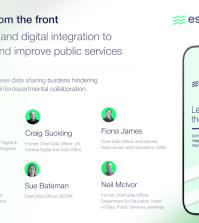International GovTech maturity “lower than expected”, says World Bank

Despite increasing investment across the world, GovTech maturity is “lower than expected” in most countries and digital citizen engagement lacking, research from the World Bank has found.
While most governments have developed core online systems, such as open-data portals and countrywide ICT infrastructure, these systems are often “fragmented and disconnected” and lacking automated data exchange. “There is room to improve interconnectivity, data exchange, and interoperability in most countries,” the World Bank report says.
GovTech initiatives should also focus more on citizen participation platforms to “deepen the citizen government relationship, improve accountability, and build public trust in government”.
The GovTech Maturity Index: The State of Public Sector Digital Transformation, published last week, examines the progress of public sector digital transformation in 198 economies. Using 48 key indicators to measure digital transformation across four key areas – core government systems; public service delivery; citizen engagement; and GovTech enablers – each country was banded into one of four categories based on its average score, from A (GovTech leaders) to D (minimal focus on GovTech).
Of the 198 economies reviewed, government entities leading the GovTech agenda exist in 80, it says, with mature digital government and good practices “highly visible” in 43.
Digital divides
GovTech-leading countries are found in Europe, north and south America, East Asia and Australasia, while those facing “large-scale GovTech challenges” are more evident in Sub-Saharan Africa and South Asia than in other regions. The report also points out that “despite good progress in most regions, digital divides persist between and within regions”.
All countries scored higher in the areas of core government systems, online services, and GovTech enablers than in digital citizen engagement.
The research highlights 22 examples of good practice such as Australia’s central digital government portal, myGov, which provides access to more than 900 online services and allows citizens to submit a complaint or provide feedback on those online services.
Other good practice examples include South Africa which has recently launched a new e-government portal; Colombia, which has multifunctional citizen participation portal Urna de Cristal; and Switzerland, which has focused on the use of virtual interfaces for public service delivery.
Disruptive technologies
The World Bank also calls on governments to use more “disruptive digital technologies” which it says can greatly improve core government operations and online service delivery. “Governments could use disruptive technologies to simplify and shorten the provision of online services at lower cost, improve the efficiency of core government systems (including e-procurement), increase transparency, and reduce corruption,” it says.
The report acknowledges that while interest in digital government is growing across the world – a trend accelerated by the COVID-19 crisis – implementation is somewhat difficult. “Turning the promises of digital solutions into tangible, measurable, and consistent outcomes remains challenging,” it says. What is crucial for GovTech initiatives everywhere is “commitment at high levels of government and the allocation of necessary resources”.























